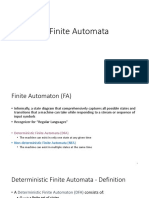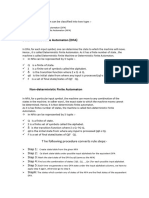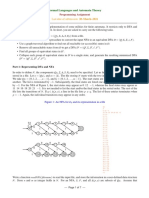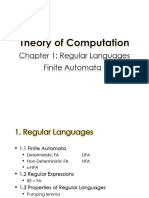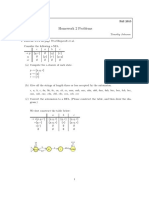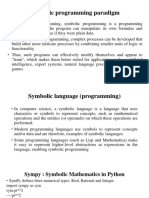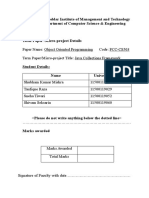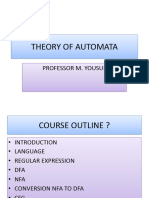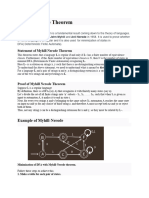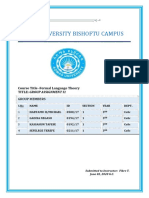0% found this document useful (0 votes)
32 views25 pagesWeek-13 App Assignment
This document contains a programming assignment with multiple Python programs that demonstrate the construction and manipulation of Nondeterministic Finite Automata (NFA) and Deterministic Finite Automata (DFA). It includes examples for creating NFAs that accept specific patterns, converting NFAs to DFAs, minimizing DFAs, and checking string acceptance against defined patterns. Each program is accompanied by code snippets and explanations of their functionality.
Uploaded by
kpnx8cpmmkCopyright
© © All Rights Reserved
We take content rights seriously. If you suspect this is your content, claim it here.
Available Formats
Download as PDF, TXT or read online on Scribd
0% found this document useful (0 votes)
32 views25 pagesWeek-13 App Assignment
This document contains a programming assignment with multiple Python programs that demonstrate the construction and manipulation of Nondeterministic Finite Automata (NFA) and Deterministic Finite Automata (DFA). It includes examples for creating NFAs that accept specific patterns, converting NFAs to DFAs, minimizing DFAs, and checking string acceptance against defined patterns. Each program is accompanied by code snippets and explanations of their functionality.
Uploaded by
kpnx8cpmmkCopyright
© © All Rights Reserved
We take content rights seriously. If you suspect this is your content, claim it here.
Available Formats
Download as PDF, TXT or read online on Scribd
/ 25











